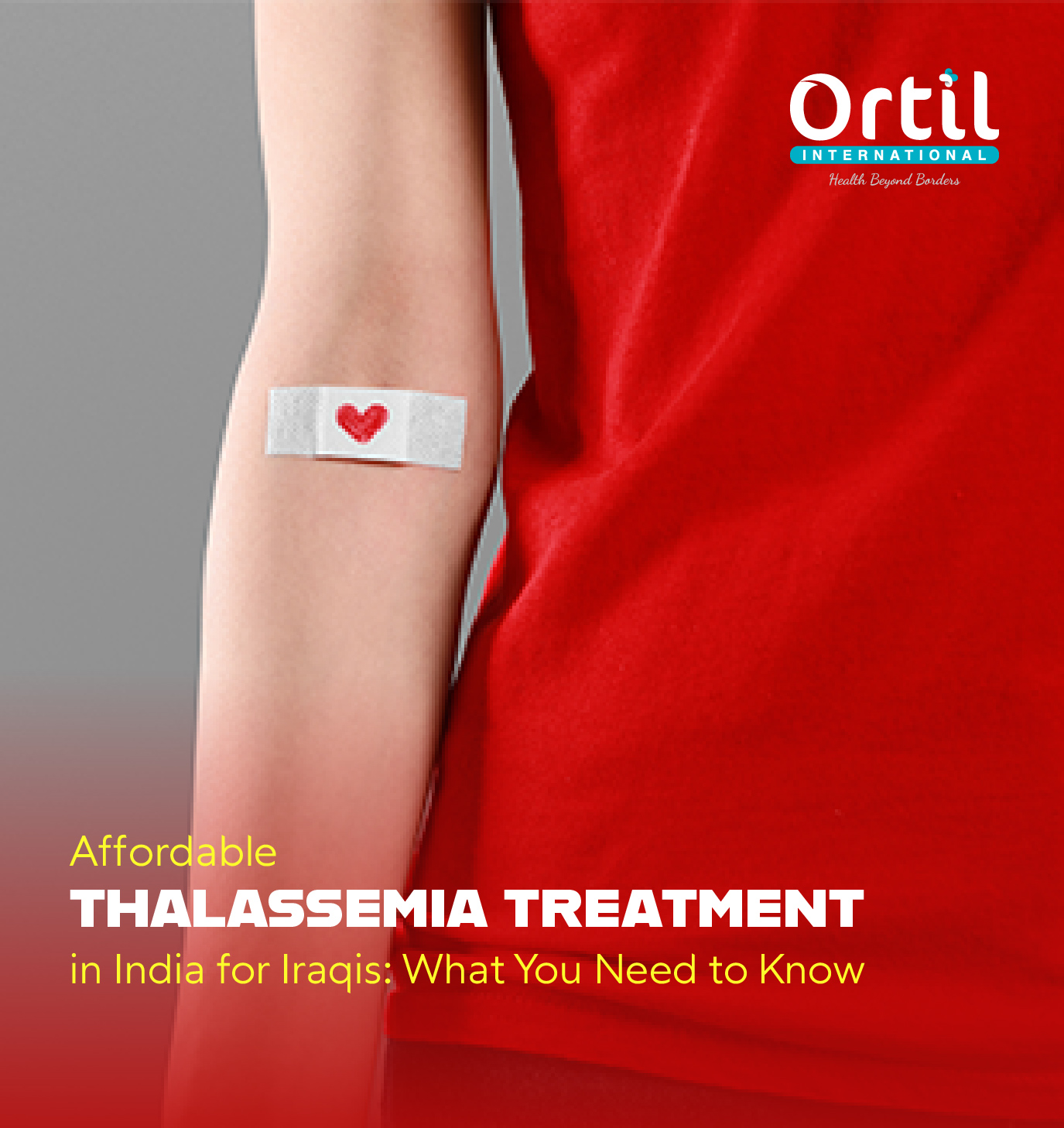All You Need to Know about Bone Marrow Transplant in India
The bone marrow transplant procedure is one of the most successful procedures performed in India's healthcare system. It has 90% to 95% of success rates. Due to the high success rates and remarkable healthcare system, many patients come to India for the bone marrow transplant. In India, bone marrow transplants are also affordable compared to other countries.

Bone marrow transplant is a complicated procedure, and you should know all about the procedure before undergoing this aggressive treatment. Let’s discuss bone marrow transplants in India in detail.
What is a Bone Marrow Transplant?
Bone marrow transplant process is a procedure in which the damaged stem cells are replaced with healthy stem cells from the healthy donor. The procedure of bone marrow transplant is performed for various blood cancers or end-stage hematological disorders.
Under various conditions, stem cells become damaged or destroyed, and they start producing abnormal blood cells, which further disrupt the functions of blood cells in the body.
What is Bone Marrow?
Bone marrow is the center portion of bone, which is soft and spongy tissue. It contains stem cells, which further divide into many types of blood cells. Each type of blood cell has certain functions in the body.
Bone marrow is of two types: yellow marrow and red marrow. Yellow marrow contains fat but red marrow contains stem cells, which divide into different types of blood cells.
What are Stem Cells?
Stem cells are present in the body and can develop into many different types of cells. They either use their capacity for self-renewal or differentiate into specialized cells with important functions. Stem cells can be found in various tissues in the body, such as bone marrow, adipose tissue, and embryos.
Stem cells are also used in different treatments because they can replace or repair damaged tissues and organs in various disease conditions. For example, bone marrow transplants are used to treat various types of blood cancers.
What are the Different Types of Bone Marrow Transplants?
Different types of bone marrow transplant procedures are available that are classified according to the origin of stem cells used in the treatment. Some types of bone marrow transplantation are as follows:
- Autologous Transplant
- Allogeneic Transplant
- Syngeneic Transplant
Autologous Transplant : In an autologous bone marrow transplant, the stem cells of the patient’s own body are used. It is mostly performed if the patient has to go for aggressive treatments like chemotherapy or radiation therapy. After the treatment, the stem cells are transferred back into the patient’s body to restore the functions of the body.
Allogeneic Transplant : In an allogeneic transplant, stem cells are obtained from a close family member, usually a sibling or genetically identical unrelated donor. Allogenic transplant has some risk of rejection but is usually managed with immunosuppressant medications.
Why Is a Bone Marrow Transplant Done?
One of the main advantages of bone marrow transplant is the eradication of the disease from its origin, and in today's world, bone marrow transplant treatment is used in various conditions. Some of these conditions are listed below:
- Leukemia
- Lymphoma
- Multiple myeloma
- Aplastic anemia
- Sickle cell disease
- Thalassemia
- Myelodysplastic syndromes
- Bone marrow failure syndromes
- Certain genetic disorders affecting the bone marrow
- Immunodeficiency disorders
What is the Bone Marrow Transplant Procedure?
The bone marrow transplant procedure involves many steps, and sometimes, patients have to wait for some time to find a donor that matches the bone marrow. The general procedure of bone marrow transplant is described below:
Preparation : Your doctor may suggest some diagnostic tests to evaluate your general health and to find a matching donor for you.
Conditioning Therapy : The patient receives high-dose chemotherapy, radiation therapy, or a combination of both to destroy the diseased or damaged bone marrow. This is also helpful in creating a space for new stem cells for transplant.
Stem Cell Collection : After that, stem cells are collected from the donor or the patient. This is done by drawing blood from the donor, which is then processed in laboratories to separate the stem cells from the blood.
Transplantation : The collected stem cells are infused into the bloodstream of the patient through a central venous catheter. The stem cells travel to the bone marrow, where they begin to produce new blood cells.
What to Consider before a Bone Marrow Transplant?
Before bone marrow transplants, you should be prepared for the procedure as it can take a while for you to recover completely. Here are some of the things that you should consider before a BMT procedure:
- Take care of your general health and maintain a balanced diet with light exercises so that you are in good general health. It will help you to recover from the bone marrow transplant.
- You should consult with your healthcare professional so that he can help you find the best donor for bone marrow. This may involve testing family members to find out the best donor for you.
- You should be thoughtful about fertility preservation, and your healthcare professional may give you options for preserving fertility, such as sperm or egg harvesting and freezing, which will be discussed before the transplant.
- About 5 to 10 days before the transplant, you'll be admitted to the hospital or clinic for conditioning. This conditioning procedure is performed to prepare your body by weakening or eliminating cancer cells and unhealthy bone marrow.
- Prioritize a healthy diet to support your body's strength. Try to stay hydrated and consume adequate calories and nutrients.
- Engage in light exercise to strengthen your body because it will help in the recovery process.
- Identify a friend or family member who can provide support throughout the transplant and recovery process. They should be able to help you with physical tasks, medication administration, meal preparation, and emotional support.
Bone Marrow Transplant Recovery
After a bone marrow transplant, each patient takes a unique amount of time to recover completely, but generally, it can take 10 to 12 months for a complete recovery. In the recovery phase, prescribed medications should be continued, and patients are advised to stick to a healthy lifestyle to prevent any complications.
In the recovery phase, blood cell transfusions are required to prevent the complications of bleeding, anemia, or infection because a bone marrow transplant takes time to generate new blood cells in the body.
Conclusion
Bone marrow transplant is a complicated procedure, and each patient should prepare himself for proper treatment. Different types of stem cell transplants procedure are available in India and each type has unique bone marrow transplant benefits. Each patient has a unique type of disease, and it will take a certain amount of time for complete recovery after bone marrow transplant treatment.
FAQ's of Bone Marrow Transplant Procedure
What Diseases Can BMT Treat?
BMT can treat many diseases like leukemia, sickle cell disease, thalassemia, multiple myeloma, etc.
When is the Best Time to have a Bone Marrow Transplant?
The best time for a bone marrow transplant is when the patient is in good general health and a suitable donor is available.
How Does a Blood or Marrow Transplant (BMT) work?
In bone marrow transplants, stem cells are transplanted, which produces healthy blood cells after engrafting and helps cure the disease condition.
What Should you Expect During and after the Procedure?
During the procedure, you'll get treatment to prepare your body and receive the new stem cells. After that, you will need time to recover completely.


















